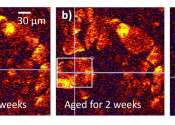Detective scientists discover ancient clues in mummy portraits
A Northwestern University research team has taken CSI to a whole new level: employing sophisticated scientific tools to investigate details of the materials and methods used by Roman-Egyptian artists to paint lifelike mummy ...









